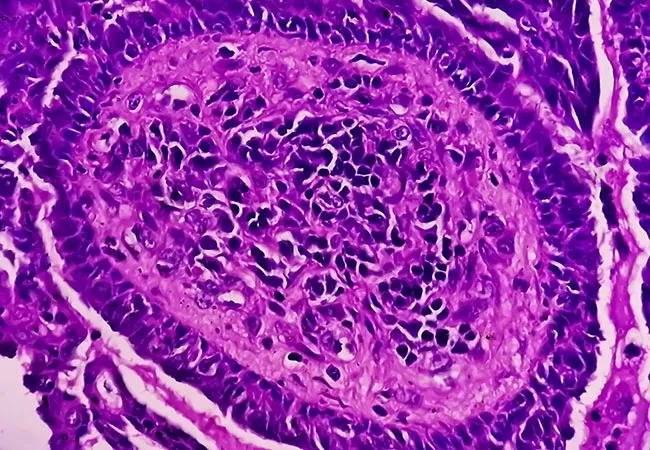Retrospective study aims to better stratify risk of disease recurrence

For patients with endometrial cancer, stratification into risk subgroups is essential to alleviate the risk of over- or under-treatment. A recent retrospective study by Mariam AlHilli, MD found that patients in FIGO stage 1 high-intermediate risk subgroups with fewer than two risk factors [FIGO grade 2 or 3, lymphovascular space invasion (LVSI) or stage 1B] had a greater than 95% cause-specific survival at three-year follow-up while subgroups with two or more risk factors had poorer outcomes. Patients in FIGO stage 2 subgroups had poorer outcomes, regardless of histology. No endometrial cancer-related deaths after three years were reported in patients with FIGO stage 1A non-endometroid endometrial cancer without myometrial invasion.
Advertisement
Cleveland Clinic is a non-profit academic medical center. Advertising on our site helps support our mission. We do not endorse non-Cleveland Clinic products or services. Policy
“The data shows that a large proportion of patients with early-stage disease are very well served with minimal treatment, such as observation or vaginal brachytherapy, after surgery,” says Sudha Amarnath, MD, study co-author and a radiation oncologist at Cleveland Clinic’s Taussig Cancer Institute. “But for patients with specific risk factors we need to consider escalating therapy to a greater degree.”
One of the most common gynecologic cancers, endometrial cancer is often identified early due to patients presenting with post-menopausal bleeding. Although outcomes are quite good in these cases, there is a need to better stratify patients beyond general low, intermediate risk and high-risk categories to determine who will need more treatment such as external beam radiation or chemotherapy. Notably, for those with certain risk factors, such as grade 3, deep myometrial invasion or LVSI – even in early-stage disease – there is a high likelihood of distant recurrence. It’s crucial to be able to identify these cases and potentially alter the course of the disease.
“Although recurrence risk has been analyzed in several clinical trials, there is a lot of variability and heterogeneity in patients’ care as well as trial inclusion criteria, so it’s difficult to ascertain the best treatment for patients in each subgroup,” explains Dr. Amarnath.
To that end, the study researchers identified 4,156 patients with FIGO stage 1 high risk and stage 2 endometrioid endometrial cancer and stage 1 and 2 non-endometroid endometrial cancer who received surgery at Cleveland Clinic or Mayo Clinic between 1999 and 2016. The three-year risk-free survival and cause-specific survival were identified in 16 subgroups, based on each patient’s risk factors. The study results demonstrated that observation or vaginal brachytherapy may only be sufficient treatment for stage 1 high-intermediate risk disease with fewer than two risk factors among grade 3, LVSI or stage 1B or stage 1A non-endometroid disease without myometrial invasion.
Advertisement
As researchers gather more genomic and molecular data, the hope is that they will be able to identify markers that might indicate a good or poor prognosis. For example, colleagues such as Roberto Vargas, MD of Cleveland Clinic’s Learner Research Institute are involved in translational research to understand genomic factors that lead to radiation sensitivity in endometrial cancer.
“There is a lot of enthusiasm around innovating and developing personalized therapies that are more effective for patients,” says Dr. Amarnath. In the meantime, she encourages clinicians to ensure patients experiencing symptoms such as abnormal bleeding, difficult or painful urination or pain during intercourse are screened. “Post-menopausal bleeding is never normal, and patients should be screened promptly to ensure the best outcome.”
Advertisement
Advertisement

Guidance for complications that occur during procedures

Approach could help clinicians identify patients at an increased risk of progression who could benefit from more aggressive treatment

A multicenter cohort study of patients with obesity suggests a decreased risk of developing new obesity-related cancers in patients with a history of bariatric surgery

Patient with quadruple refractory multiple myeloma achieves complete response with cell therapy

Distinct baseline immune profiles can predict response and resistance to different types of CAR-T cells.

National Blood Clot Alliance collaborates with faith-based organizations on first-of-its-kind church bus tour

AI-driven tools can streamline enrollment and improve efficiency across clinical trials.

Patient achieves complete remission from aggressive marginal zone lymphoma with liso-cel